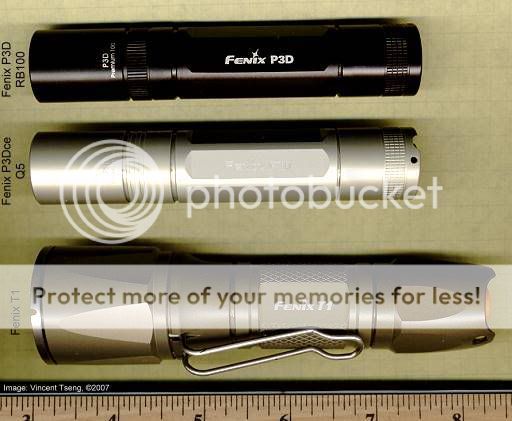EDIT to ADD -
This thread has also evolved into a discussion of
Color Rendtion comparsion between LEDs and incandescents - starting at Post #28 (link) using a Map
Using Tungsten and Auto white balance to approximate to the way the brain would adjust/compensate to incandescent lighting -
and also using a standard Macbeth color (patch) rendering chart - see Post #52 (link).
Experiment with color removal/desaturation to compare the luminance/brightness in patches Post #59
Experiment with adding orange LEDs and using vision enhancing sunglasses as filter - Post #69
Socks - differentiating between navy and black - Post #82
Sunlight pics of Macbeth chart Post #105
Better Sunlight pics of Macbeth and Map - Post #112
Summary of position/opinion so far - Post #73
Warmer tints and Kruithof curve - Post #123
-------------------------------------------------------------------
Not so long ago LED flashlights were regarded as efficient and frugal on batteries, but only "bright for what they were" and used only for close tasks and emergencies.
Since the advent of the Cree 7090 XR-E - LED flashlights have surpassed the brightness of the typical 2x lithium CR123A xenon light - like the fabulous SureFure 6P, G2 and Streamlight Scorpion (the one used most in CSI).
In fact even the single AA Fenix L1D-CE is rated brighter than these 2x CR123A xenons - this is simply incredible and unheard of just a few years ago.
These comparison beamshots have had the color removed by deSaturation leaving only the luminance/brightness information - to remove any color bias/influence -


remember this is single AA battery light compared to a 2x CR123A lithium xenon light
- which is already brighter than a typical 3x D battery Kypton flashlight....

With the more premium Q-series Crees and LumiLEDs Rebels - and using more than 3 volts - we have now surpassed even the typical 3x lithium CR123A xenon lights - at one time regarded as the tops and "ridiculously" bright.
Of course one can see that just from the specs - the now legendary SureFire 9P (3x CR123 xenon) is rated at 105 lumens - the new Fenix T1 is rated at 225 lumens, that's a factor of 214% - so should easily be brighter, even allowing for inflated specs.
Even on the P91 ultra High Output lamp the SureFire 9P reaches 200 lumens - BUT runs for all of 20 minutes on 3x CR123 -
compared to the Fenix T1's 225 lumens, rated to run for 1.5 hours - similar brightness -
but 4.5x the runtime on 2/3 the batteries.......
In fact the specs of the Fenix P3D's are -
Q5 - 215 lumens 1.8 hrs;
Rebel100 200 lumens 1.8 hrs
Just to put matters to rest -
Fenix T1 vs. SureFire 9P (3x CR123 xenon - P90 standard lamp)


Still not convinced?
Practical stairway shots -
Color deSaturated -




That last shot is from a single AAA light - but using an AAA sized 3.7V Li-Ion rechargeable 10440 battery.
I think these shots speak volumes.....
This thread has also evolved into a discussion of
Color Rendtion comparsion between LEDs and incandescents - starting at Post #28 (link) using a Map
Using Tungsten and Auto white balance to approximate to the way the brain would adjust/compensate to incandescent lighting -
and also using a standard Macbeth color (patch) rendering chart - see Post #52 (link).
Experiment with color removal/desaturation to compare the luminance/brightness in patches Post #59
Experiment with adding orange LEDs and using vision enhancing sunglasses as filter - Post #69
Socks - differentiating between navy and black - Post #82
Sunlight pics of Macbeth chart Post #105
Better Sunlight pics of Macbeth and Map - Post #112
Summary of position/opinion so far - Post #73
Warmer tints and Kruithof curve - Post #123
-------------------------------------------------------------------
Not so long ago LED flashlights were regarded as efficient and frugal on batteries, but only "bright for what they were" and used only for close tasks and emergencies.
Since the advent of the Cree 7090 XR-E - LED flashlights have surpassed the brightness of the typical 2x lithium CR123A xenon light - like the fabulous SureFure 6P, G2 and Streamlight Scorpion (the one used most in CSI).
In fact even the single AA Fenix L1D-CE is rated brighter than these 2x CR123A xenons - this is simply incredible and unheard of just a few years ago.
These comparison beamshots have had the color removed by deSaturation leaving only the luminance/brightness information - to remove any color bias/influence -


remember this is single AA battery light compared to a 2x CR123A lithium xenon light
- which is already brighter than a typical 3x D battery Kypton flashlight....

With the more premium Q-series Crees and LumiLEDs Rebels - and using more than 3 volts - we have now surpassed even the typical 3x lithium CR123A xenon lights - at one time regarded as the tops and "ridiculously" bright.
Of course one can see that just from the specs - the now legendary SureFire 9P (3x CR123 xenon) is rated at 105 lumens - the new Fenix T1 is rated at 225 lumens, that's a factor of 214% - so should easily be brighter, even allowing for inflated specs.
Even on the P91 ultra High Output lamp the SureFire 9P reaches 200 lumens - BUT runs for all of 20 minutes on 3x CR123 -
compared to the Fenix T1's 225 lumens, rated to run for 1.5 hours - similar brightness -
but 4.5x the runtime on 2/3 the batteries.......
In fact the specs of the Fenix P3D's are -
Q5 - 215 lumens 1.8 hrs;
Rebel100 200 lumens 1.8 hrs
Just to put matters to rest -
Fenix T1 vs. SureFire 9P (3x CR123 xenon - P90 standard lamp)


Still not convinced?
Practical stairway shots -
Color deSaturated -




That last shot is from a single AAA light - but using an AAA sized 3.7V Li-Ion rechargeable 10440 battery.
I think these shots speak volumes.....
Last edited:








